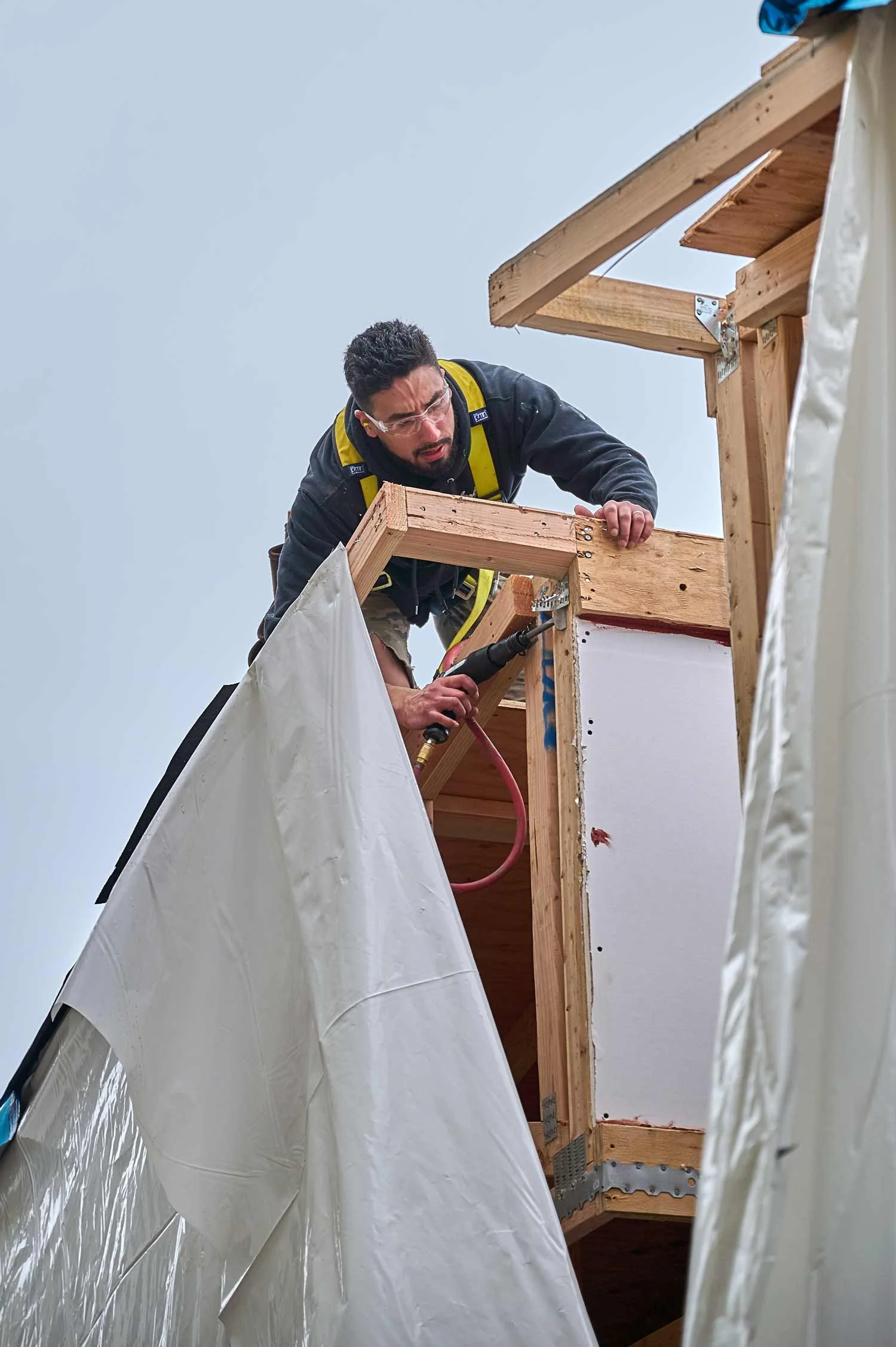
Frequently Asked Questions
Can’t find the answer you are looking for? We would be happy to answer any other questions you may have.
-
Modular is a “type” of construction in which a building is built in pieces or “modules” at an off-site location, and then delivered and assembled for completion on site.
-
Prefabricated means that components of the building are fabricated off-site. Prefabricated components typically refers to cutting pieces to size, predrilling holes for ease of assembly, and prefinishing items prior to assembly.
-
Modular buildings are built to a different building code, and have different licensing requirements and building standards. Modular construction is required to follow the current International Building Code which is the same as site-built construction, and manufactured homes follow the HUD Building Code.
-
Buildings are investments – both in space and in the people that occupy the space. We understand that you want your product to have value. The preliminary work we do is intended to avoid unwanted surprises later on in the process or upon occupancy.
Blazer has a strong commitment to providing a product you expect, to sustainability, to community, and to providing a safe and clean environment for our associates. We are dedicated to continued innovation and growth of the modular industry, and in how that can benefit the future of construction.
-
There are many types of buildings that can be built modular. There are restrictions such as width, height and length of each module due to transportation limitations, but some of those can be overcome with good design. In addition, there are ways to combine various construction methods to make the building process efficient and effective. This can include panelized and other site-built methods which is very common in larger structures.
Blazer specializes in light commercial work which includes single level up to 3-story structures of various sizes. We are not opposed to looking at other structures, but to date we have focused on the types of buildings as seen in our Product Lines. We are always open to expanding the markets we serve.
-
The difference is only in the use and intent and not in the structure itself. Modular buildings must meet a specific building code whether or not they are intended for temporary or permanent placement. The biggest difference really is in the foundation required.
Why Modular?
-
Speed: Quicker to occupancy and quicker return on investment.
Quality: It has to be moved down the road, craned through the air and fit together with precision. Modular is built well.
Sustainability: Modular construction is a “greener” way to build. Modular techniques require efficiency which allows for a reduction in waste. Lean techniques are standard in the modular industry.
-
Primarily, this is because the building has not been properly maintained. A building is no different than a house or a car. The better you take care of it, the better it will perform over time and the better it will look. A second reason is the choice in the design and the materials. It is common (Especially from the 1960’s through the 1980’s) for customers to select the lowest cost option. This may make a building more affordable up front, but the lower quality materials may not hold up as well over time. Blazer is a believer in utilizing higher quality materials from the start. This includes everything from what you cannot see inside the walls all the way to the type of paint. Ultimately, you get what you pay for. Our customers typically look at the big picture and select quality over cost.
-
The short answer is “no”. The long answer is – it is all in the materials used and it has nothing to do with the fact the building was built modular. Blazer does not use toxic materials along with majority of builders today. The construction industry as a whole has worked to improve the toxicity level of products, and Blazer is committed to utilizing the best products possible.
-
Modular buildings are typically installed by a contractor with experience in modular construction. They crane the modules into place on a site-built foundation, ensure the modules are level and bolt them together. Once assembled, the finish work (closeup of mate lines) and utilities are connected. A final inspection is required by the local municipality to obtain a certificate of occupancy.
-
Blazer does not do any site work. We keep our scope to the factory portion so that our associates can focus solely on the manufacturing of the modules.
-
This varies by project due to size, complexity and the other work Blazer has in process. The preliminary work including finalizing the design, shop drawings, engineering and State plan approvals typically takes longer than the actual production of the modules. This can take anywhere between 8 and 16 weeks. Large projects can take longer.
-
Cost has several factors. One is the location of the site. Building and energy codes are different which affects the engineering and the materials required to meet code. The other factor is the finish materials chosen. As with any building project, materials selected vary in price and vary in the labor it takes to install. Gold is gold whether you install it in a modular or in a site-built structure.
Blazer does not provide a general, average or standard price per square foot. Since we are a custom builder, and because there are so many factors that make each project different, we price each project individually.
-
Since we are a custom builder, we do not provide cost per square foot number for general inquiries. In addition, our scope is only for the factory portion of the work so the construction costs don’t include transport or any work required on site. Cost per square foot varies by design, complexity, materials selected, repetition, and volume of work. Typical cost savings for bulk orders are due to reduction in preproduction costs including design, engineering, and State approvals. Production efficiencies due to repetition also can reduce the cost of a project
-
Typically, they are not. The buildings are built utilizing the same materials and a similar work force so both the prices and labor rates are comparable. There is a savings in labor due to efficiencies in production. However, there is an additional cost for the transportation and setting of the modules on site which may or may not bump the price to that of a site-built building.
However, since modular construction is faster it allows occupancy and the opportunity to generate revenue sooner than that of traditional construction. In addition, construction expenses can conclude sooner than that of traditional construction which can also save money.
-
Please contact us and we will discuss your project with you. We are able to tell you early on whether or not it makes sense for your project to be built modular and/or whether or not your project is a good mutual fit for you and for Blazer. If we mutually decide to proceed, we will put together the right team to work with you on your project.
-
There is no limit to how far a modular building can be shipped. However, the cost for transportation is often prohibitive to the overall cost of the project. Transportation is an important factor when considering the overall cost of the project.
-
Absolutely! This is 100% in the design. There is no reason for a modular building to look like a trailer, or any different than it would if it was built using traditional construction methods. Roof design and siding and trim layout are typically ways in which to improve the look of the building.
-
Modular is fast. However, modular is still construction and Blazer is a custom builder. With that, we have no buildings in inventory, and we don’t have standard plans we offer customers to select from. Each building is unique because the location in which it will be set dictates the code and structural requirements.
This means that each building needs plans drawn, engineered and approved by the State in which the building will be located. The time frame for this can be 8-16 weeks or longer depending on the size and complexity of the project. Materials selected also have lead times which often dictates the time frame of the schedule. In addition, the project has to be placed in to a schedule that includes other projects. Depending on the time of year, the lead time to fit into production can be 4 – 6 months. The fastest part of the project is the actual factory construction of the modules.
As with any construction project, the sooner you are able to place an order the better. That way, you are more likely to have your project on site and ready for occupancy when you need it.
If you need a basic building fast please contact us and we will connect you with one of our partners that may be able to assist you in finding a product that fits your needs.




